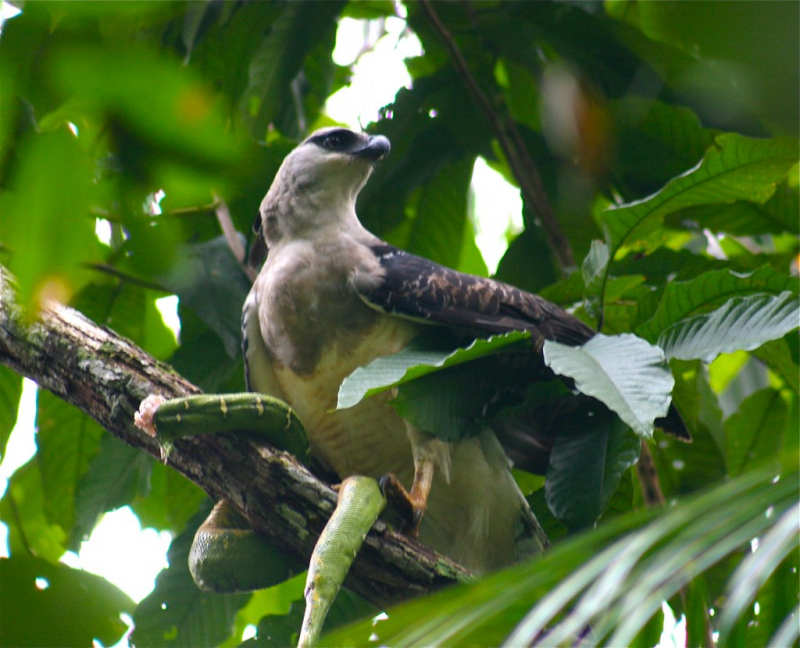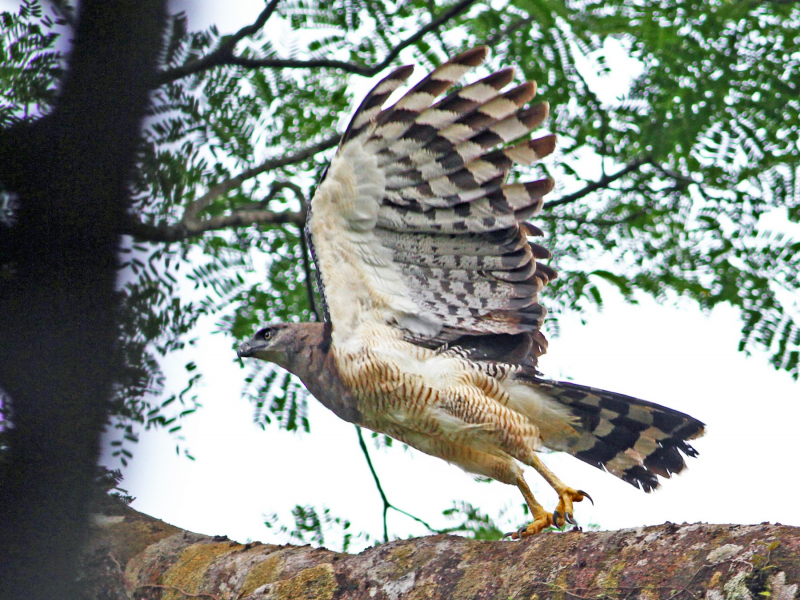The crested eagle
The crested eagle (Morphnus guianensis) is a big eagle found in the Neotropics. The crested eagle can reach 89 cm (35 in) in length, 176 cm (69 in) in wingspan and weigh up to 3 kg (6.6 lb). The plumage ranges from light brownish-gray to sooty gray and, in some cases, blackish. It features a white throat, a dark crest spot, and a little dark mask across the eyes. It is found throughout Central and South America, albeit in small quantities. Its diet consists primarily of small animals, rodents, snakes, and smaller birds. Despite their widespread distribution, the IUCN has classified them as Near Threatened, owing primarily to habitat loss.
It is found sparsely throughout its extensive range, which extends from northern Guatemala through Belize, Honduras, Nicaragua, Costa Rica, Panama, Colombia's subtropical Andes, northeastern Venezuela, Guyana, Suriname, French Guiana, Brazil (where it has suffered greatly from habitat destruction and is now found almost entirely in the Amazonian basin), and east Andean Ecuador, southeastern Peru, Paraguay, and eastern Bolivia to northern Argentina.
The crested eagle inhabits humid lowland forests, primarily old-growth tropical rainforests. They can also be found in forest ravines and gallery strips. The species has been seen from sea level to 600 m across most of its range (2,000 ft). They appear to be local dwellers in foothill forests up to 1,000 m (3,300 ft) elevation or even 1,600 m in the Andean countries (5,200 ft). They may have a preference for being near water, such as beaches or rivers.
The crested eagle appears to be a still-hunter, as it has been recorded perched for extended periods of time while visually examining the forest surrounding it. By preying on lesser animals, the crested eagle can escape direct conflict with the harpy eagle.











